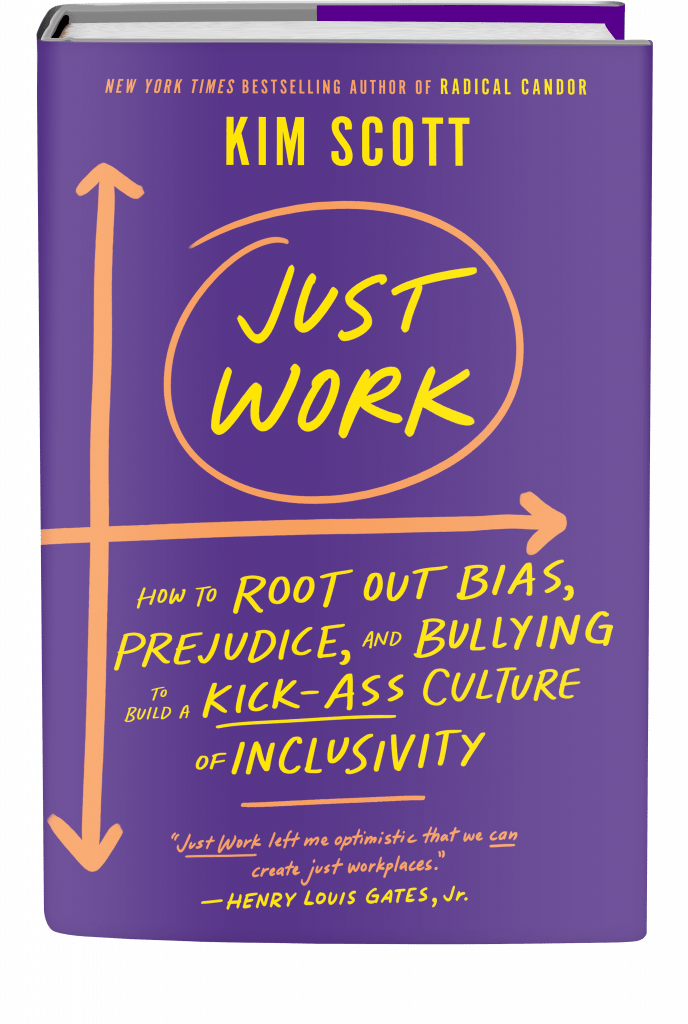This post about how to fix communications issues in the workplace is by Zachary Amos,…
6 Steps for Setting Measurable Goals to Avoid “Productivity Paranoia”
With more people working in remote and hybrid environments than ever before, company, team and individual goals must be explicit and measurable. Setting goals is an ideal way to stave off what Microsoft calls “productivity paranoia.”
According to new research from Microsoft WorkLab, this is defined as: “A fear among leaders that remote and hybrid employees are being less productive than they would be in an office full-time, even though people are working more than ever.”
Colette Stallbaumer, the general manager for Microsoft 365 and “future of work,” tells CNBC that leaders need to shift their focus from activity to impact.
“The most important question they should be asking themselves is: ‘How can I create clarity and help people understand what to prioritize so we’re rewarding employees’ impact, not just their activity?’”
The best way to do this is to set clear, measurable goals, so folks aren’t spinning their wheels 24/7 trying to figure out what they need to get done.
Lean How to Practice Radical Candor On Remote & Hybrid Teams >>
For setting goals, Google used a system called Objectives and Key Results (“OKRs”), an approach to goal-setting borrowed from Intel. This is certainly not the only approach, and it’s not perfect, but of all the systems I’ve experienced, this one works best.
Volumes have been written about this system, and there’s a great video that Google Ventures produced explaining the whole system (which you can watch below), so I will try to describe it as briefly as possible.
- Objectives are a description of what you are trying to do. They should be ambitious. They don’t have to be measurable.
- Key results are a description of how you are going to achieve your objective. They must be measurable.
- There should only be a max of 5 objectives with a max of 4 key results under each. (Few teams or people at Google ever kept to that.)
- There should be annual OKRs and quarterly OKRs.
- OKRs must be “graded” regularly.
- OKRs and their “grades” must be transparent to everybody.
- OKRs “grades” don’t have to translate to ratings, bonuses, etc. Generally, it’s enough just to grade them.
- Each individual should have OKRs, each team should have OKRs, and the company should have OKRs. They should all line up, and none should be dictated. While the company OKRs may be “top level,” they shouldn’t be “top down.”
Need help with Radical Candor? Let's talk! >>
Learn to be OK with OKRs not being up to you
The hardest part of this system for me was understanding that the OKRs shouldn’t be top-down. If I wanted goals to be achieved, I couldn’t just set them.
Instead, I had to listen broadly to what people hoped to achieve, push them to clarify their ideas, encourage debate about competing ideas, let everyone know how they are going to participate in deciding what to do and make sure that the resulting decision persuades everyone.
Once I’d seen the results, I had to learn from what happened so that the team and I could adjust.
I have to do all this extremely efficiently, or else we’d spend all our time setting goals and none of our time achieving them.
I did not do nearly as good a job coming up with annual and quarterly OKRs for my teams at Google. First, I tried just setting them. They were often irrelevant and always ignored. Then I would write a “draft” and ask the team to edit it.
We limped along for a couple of years, all of us dreading the long, tedious, too-big meetings we had discussing the goals I’d proposed. Finally, Scott Sheffer, a manager on my team, came up with a much better process.
He came into my office one day and relieved me of my responsibility for coming up with the first draft of our “objective and key results.”
“You get to edit the plan; you do not get to write it,” he said to me.
“But it will not be coherent!” I protested. “All the different teams will want to do different things, and the different regions will put yet another spin on things. It will be chaos.”
“Give them a chance.”
I did, and sure enough, they came up with a far better first draft than I could ever have done. Was it perfectly efficient? No! They had to start a few weeks earlier than I would have because they had to have a bunch of debates.
But, as a result of those debates, they came up with a plan that they could actually commit to. As a result, we accomplished a lot more that quarter than we ever had before.
Here’s the process Scott came up with.
The Get Stuff Done Wheel For Setting Goals
1. Listen
Share the context: Scott made sure to share the context with the team. This spared him from listening to irrelevant ideas. Scott didn’t have the depth of knowledge that the people reporting to him had over their respective areas.
But he did know a lot more than they did about how what the AdSense team was doing fit into broader goals at Google and other teams’ work. By sharing this context, he prevented (most of the time) teams from pursuing ideas that just weren’t that important.
Break down the categories and identify people who are in charge of each: Like Eric identified the 12 “strategy” questions, Scott broke down the problem of quarterly and annual goal-setting into several discrete categories and assigned teams to each.
This helped the team avoid the “blank sheet of paper” syndrome and get going quickly. We might never have come away with goals if Scott had asked a team of 100 people to define the categories and then organize teams to approach each one.
Scott made himself available along the way. Like Eric, Scott met with each team twice to help them if they were stuck and give them course corrections if necessary.
2. Clarify
Require owners and metrics for each goal: When writing a goal collectively, it was easy for teams to get sloppy in their thinking. When each goal could be measured, and somebody was on the hook for achieving that number, much crisper goals came out of the process.
Team goals had to have a person who was ultimately accountable. Each individual on the team had to have goals that contributed to the broader team goal and understand what their contribution was expected to be.
Set the constraints: Scott also limited the number of goals each team could set for itself. This constraint forced teams to be clear about what they were really going to do each quarter, instead of putting together a laundry list of things they hoped to do but probably wouldn’t get to.
Schedule presentations: In addition to helping along the way, Scott had each team present ideas to each other. These presentations were extremely short — the goal was to be able to explain a quarter’s work in 15 minutes or less.
These presentations aimed to ensure that ideas were easy to understand, not persuade others that these were the right OKRs.

3. Debate
Require debate but limit duration and frequency: Scott carefully managed how long and how often each team could meet to debate ideas, and once they’d finalized their idea, he had them present and debate with other teams.
4. Decide
Be clear about how the final strategy will be decided: Scott set up a series of meetings with “final deciders” two weeks before the end of the quarter to review proposed goals.
I was one of the final deciders, and I suppose I could have vetoed decisions I didn’t like, but I never came close to doing that.
5. Persuade
During the last week of the quarter, Scott asked each team to present the goals at an all-hands meeting. The team coming up with the goal generally presented the logic, since they had the most credibility. It often fell to Scott, though, to address the emotions in the room.
Require goals to be transparent and measurable: The numbers generally made the logic of a goal clear and tended to be extremely persuasive. Everyone on Scott’s team could see everyone else’s goals, and also whether or not they were hitting them.
This increased the accountability that people felt for hitting their goals, and also encouraged people to aim for impressive results. It also tended to decrease the tendency for one team to assume another team is “doing nothing.”
Show a connection between the team and company goals: The key thing here was not to be too literal. One of the tricky things about goal-setting at a company as big as Google was reconciling a small team’s goals with company-wide goals.
For example, Scott worked on the AdSense team. In some quarters there would be a company-wide AdSense goal; in other quarters there wouldn’t be.
And when there was a company-wide AdSense goal, the owner was never anyone from sales, but always somebody from the product or engineering teams. The key was to make sure the team understood how their efforts and successes were contributing to Google’s broader efforts and successes.
6. Learn
Grade goals regularly, continually if possible: The team who set the goals was responsible for grading them — my team and I sometimes had a review to make sure the grading was reasonable. Whenever possible, goals were continually and automatically graded.
For example, a customer satisfaction goal could be calculated daily and even hourly. However, other goals had to get graded manually.
All goals would be graded mid-quarter. This was important for two reasons.
One, it gave the teams a chance to learn whether or not they had set the right goals and whether they were on the right track while there was still time to adjust.
Two, since we had to set the next quarter’s goals before the final grades were in on the current quarter, it was important to have a sense of how things were going.
We reviewed the mid-point grades at my staff meeting and then presented them at our team’s all-hands meeting on the sixth week of the quarter; we did the same for final grades on the first week of the next quarter.
If the listen-clarify-debate-decide-persuade-learn wheel at Google was spinning pretty slowly for mission and culture, which were set but still moving forward when I got there, it moved a little faster for strategy.
For OKRs, the wheel was always spinning pretty fast. It wasn’t always perfectly clear how the OKRs of teams, even teams working on the same product, meshed. For a while, we tried setting joint OKRs between the different teams working on AdSense: product, engineering, marketing, direct sales, and online sales.
In the end, we found it wasn’t worth the coordination effort. It was better for each team to set their own goals separately, and share them as soon as they were ready. If there were a major disconnect, we’d reconcile, but generally, this worked out.
The process for coming up with the top-level company OKRs was pretty clear. Not everyone got included, but it was OK because everything was transparent.
Once everyone knows and understands their goals they can spend time working toward them and making an impact versus developing productivity paranoia because they have no clue how they should prioritize their work.
Open the Get Stuff Done Guide for Projects Guide >>
————————————————————————————————————————————————————————————–
- Take the Radical Candor quiz >>
- Sign up for our Radical Candor email newsletter >>
- Listen to the Radical Candor podcast >>
- Shop the Radical Candor store >>
- Get Radical Candor coaching and consulting for your team >>
- Get Radical Candor coaching and consulting for your company >>
Need help practicing Radical Candor? Then you need The Feedback Loop (think Groundhog Day meets The Office), a 5-episode workplace comedy series starring David Alan Grier that brings to life Radical Candor’s simple framework for navigating candid conversations.
You’ll get an hour of hilarious content about a team whose feedback fails are costing them business; improv-inspired exercises to teach everyone the skills they need to work better together, and after-episode action plans you can put into practice immediately to up your helpful feedback EQ.
We’re offering Radical Candor readers 10% off the self-paced e-course. Follow this link and enter the promo code FEEDBACK at checkout.
Watch the Radical Candor Videobook
We’re excited to announce that Radical Candor is now available as an hour-long videobook that you can now stream at LIT Videobooks. Get yours to stream now >>






